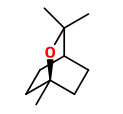Passiflora tripartita var. mollissima (Kunth) Holm-Niels. & P.M.Jørg. syn. Passiflora mollissima (Kunth) L.H.Bailey - Passifloraceae - curuba, banana passionfruit, curuba de Castilla (span.), tumbo serrano (span.), Curuba, Bananen-Passionsfrucht
Woody vine, climbing shrub, native to South America (Panama, Venezuela), cultivated and naturalized elsewhere; flowers pendant, hypanthium green, corolla dark magenta pink color (rarely white), campanulate; fruit pale yellow, oblong, rounded at both ends, up to 15cm long, pulp orange, seeds up to more than 100.
The major volatiles of fresh curuba (P.molissima) fruit pulp were various hexyl and isomeric hexenyl esters.
[Froehlich, Otmar, Carmenza Duque, and Peter Schreier. „Volatile constituents of curuba (Passiflora mollissima) fruit.“ Journal of Agricultural and Food Chemistry 37.2 (1989): 421-425]
Main compounds identified in curuba fruit (dynamic headspace solid-phase microextraction on PDMS/DVB) were (Z)-β-ocimene (56.5%), hexyl butyrate (16.8%), hexyl hexanoate (13.9%), hexanol (3.0%), butyl hexanoate (1.0%), (E)-β-ocimene (1.4%), butyl acetate (0.9%), and 1,8-cineole (0.8%).
[Pontes, Marisela, J. C. Marques, and J. S. Câmara. „Headspace solid-phase microextraction-gas chromatography-quadrupole mass spectrometric methodology for the establishment of the volatile composition of Passiflora fruit species.“ Microchemical journal 93.1 (2009): 1-11]
„The odour-active volatiles of curuba fruit (Passiflora mollissima (Kunth) L. H. Bailey) were isolated by solvent assisted flavour evaporation (SAFE). GC-O and GC–MS analyses identified linalool, hexyl acetate, 1,8-cineole, and butyl acetate as key aroma compounds of this fruit. Other odorants relevant because of their contribution to the overall aroma were: 2-methylpropyl acetate, (Z)-3-hexen-1-ol, and (Z)-3-hexenyl acetate. Sulphur compounds, 3-sulfanylhexyl acetate and methional, were reported here for first time as odour-active volatiles in curuba.“
[Conde-Martínez, Natalia, Diana Cristina Sinuco, and Coralia Osorio. „Chemical studies on curuba (Passiflora mollissima (Kunth) LH Bailey) fruit flavour.“ Food chemistry 157 (2014): 356-363]
„One of the most commonly grown Passiflora species from the supersection Tacsonia was formerly known as P. mollissima (Kunth) L. H. Bailey. Due to morphological and genetic studies the currently accepted name for this taxon is P. tripartita var. mollissima. In 2001, the cultivar ‘Banana Poka’ of P. mollissima (Kunth) L. H. Bailey was recognized as an independent taxon and described as P. tarminiana (Coppens et al., 2001). This species is different from P. tripartita var. mollissima (and the other varieties of this species) by, e.g. smaller and readily deciduous stipules, a shorter hypanthium and a larger nectar chamber. To distinguish P. tarminiana, P. tripartita and the closely related P. mixta L. f. see the table in Coppens et al. (2001) and the key in Rejmánek (2009). The latter contains also P. caerulea L., P. edulis Sims, P. mixta L. and Passiflora ʻCoral Seaʼ.“
[Otto, R., and Filip Verloove. „New xenophytes from La Palma (Canary Islands, Spain), with emphasis on naturalized and (potentially) invasive species.“ Collectanea Botanica 35.10.3989 (2016)]
„The most popular species are called curubas in Colombia and tacsos in Ecuador and Perú. The two most important curuba taxa are P. tripartita var. mollissima and P. tarminiana. Both of them can escape from cultivation in man-disturbed habitats, and populations originating in the wild have been rarely observed. P. tarminiana however may present serious problems as an invasive species, as in Hawaii and New Zealand. These two curubas are mostly used to prepare refreshing beverages as juices. Their cultivation is ancient, and they were semi domesticated by the indigenous people of South America well before the Spanish conquest.“
[Ocampo, John, Geo Coppens D'Eeckenbrugge, and Gustavo Morales. „Genetic resources of Colombian Tacsonias (Passiflora supersection Tacsonia): A biological treasure still to discover, use and conserve.“ (2017)] PDF
„The odour-active compounds of three Tacsonia fruits (Passiflora sp.) species: P. tarminiana, P. mixta and P. tripartita var mollissima, were isolated by headspace solid-phase microextraction and identified by gas chromatography–olfactometry and gas chromatography–mass spectrometry analyses in comparison with standards. Physicochemical and sensory properties were different in the threes species. P. mixta exhibited an intense green, herbal, and seed-like odour; P. tarminiana was characterised by the presence of sweet, acidic, fruity, and floral odour notes, while P. tripartita had a soft sweet, fruity, and aqueous odour. Aliphatic esters and alcohols, and terpenic compounds were predominant in all of these species; being hexyl acetate, hexyl hexanoate, and hexyl butanoate major constituents in all of them.“
[Martín, Diana Alexandra, Coralia Osorio, and Diana Cristina Sinuco. „Flavoromics approach to differentiate three edible Tacsonia (Passifloraceae) fruit species.“ European Food Research and Technology 244.4 (2018): 695-703]

Passiflora tripartita var. mollissima, Ollantaytambo, Peru (2014) © Daniel Hetzel CC BY-SA 4.0 inaturalist.org




